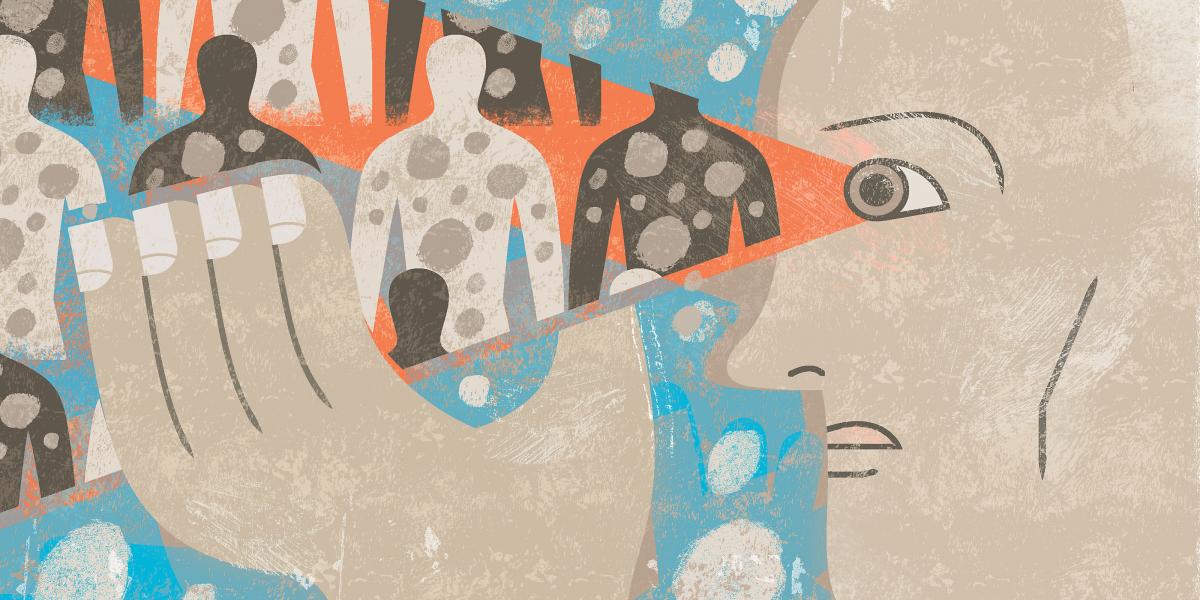Otis Brawley on Cancer's Critical Socioeconomic—Not Just Racial—Disparities
Focusing on race obscures the true drivers of cancer disparities.
For decades, our thinking about racial disparities in cancer outcomes has been based on a racial myth: that blacks and whites—and the diseases that affect them—differ biologically. There are still places in our country where this thinking persists, despite abundant research showing that almost all racial disparities are actually socioeconomic disparities.
The idea that cancer is different in blacks versus whites seems to be borne out by grim statistics such as those for colon cancer: In 2012, 67% of whites were alive five years after diagnosis compared to 59% of blacks. It was accepted for a long time that colon cancer is a more aggressive disease in black people versus white people.
But a 2015 study by Kim Rhoads and colleagues at Stanford dug deeper. They examined records of more than 30,000 colon cancer patients treated in California and compared outcomes of patients treated at an integrated health care system, where all aspects of care are delivered by the same organization, to outcomes of patients treated in other settings. The integrated systems had a higher rate of compliance to National Comprehensive Cancer Network guidelines, meaning that they regularly delivered evidence-based care. Not surprisingly, black patients treated at an IHS received high-quality care at higher rates than they did in other settings. They were more likely to receive surgery and chemotherapy, and they had better outcomes. In fact, their outcomes were the same as those for whites. This equitable delivery of high-quality health care eliminated disparities in colon cancer survival.

Every time our research has looked at it, equal treatment yields equal outcomes. But there is not equal treatment, and this problem transcends race. In fact, in absolute numbers, more whites are affected by health care disparities than blacks and Hispanics combined. The percentages are lower, but the number of people affected is much, much higher. This is why I’ve expanded my definition of disparity over the years. I believe that health care is a human right. So to me, disparity exists when any human being doesn’t get the services all humans are entitled to.
This is not a black race problem. It is a human race problem.
Let me explain: College-educated Americans have much lower death rates from cancer than those without a college degree. If everyone had the same risk of death from cancer as college-educated Americans, an estimated 150,000 fewer people would die this year.
This is not to say that college reduces death rates. Again, we have to dig deeper. What it means is that we could reduce cancer deaths by 22% if everyone had the same screening, treatment and prevention as college-educated Americans, starting in childhood. College-educated Americans eat more fruits and vegetables. They exercise more and are less likely to be obese than those with less education. They are far less likely to smoke: 6% of college-educated Americans smoke, while 20% of non-college-educated people do. Finally, those with college educations are more likely to seek medical treatment, have insurance coverage and receive high-quality care.
How can we give everyone the same outcomes as college-educated Americans? We need to level the playing field, and we need to start as early in life as possible. We need to impress upon everybody the importance of avoiding tobacco. We need to educate young mothers and young fathers that everyone needs five to nine servings of fruits and vegetables per day, and we need to make sure they are accessible. We need to impress upon parents that kids need to be able to play and have some aerobic activity. All of this is part of prevention, and by preventing disease, we can reduce the need for treatment.
At the same time, we have to provide access to high-quality screening and treatment across the board. Ample evidence shows that when state and local governments commit to expanding care, disparities are reduced. In New York City, for example, the Department of Health and Mental Hygiene launched a colon cancer awareness and screening campaign in 2003 that increased screening rates from 42% to 69% over 10 years. Delaware invested in a similar campaign and reduced colon cancer mortality across the board. And Chicago saw a 39% decline in breast cancer mortality when the Metropolitan Chicago Breast Cancer Task Force advanced health care quality improvement projects and helped women navigate the health care system. In all three cases, disparities were nearly eliminated. This proves that it can be done.
We should learn from the successes in New York, Chicago and Delaware and take them nationwide. What we need now is for health care providers, advocates and policymakers to start focusing on high-quality health care—including preventive services—as a human right. We need to commit to this as Americans. A true American doesn’t leave anyone behind, but right now we are leaving people behind.
It’s long past time to move beyond discussions of racial differences and the notion that cancer disparities are too big a problem to solve. We know we can achieve health equity because we have seen it happen.
The only remaining question is when the health of our fellow humans will become a priority.
